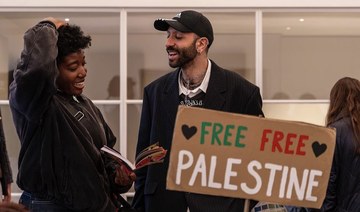For the second year in a row, the Jeddah Art Week (JAW) has been a successful event, exhibiting more than 50 different works of art made by local, regional and internationally celebrated artists.
The event kicked off on Feb. 1, with a turnout of more than 12,000 during its six-day run.
The event was held under the patronage of the Ministry of Culture and Information and the Abdul Latif Jameel Community Initiatives.
The Saudi Society for Culture and Arts, in collaboration with Sotheby’s, Edge of Arabia Projects and Arabian Wings, intend to build on the success of last year’s inaugural event, which saw 1,500 people attend.
On display was one of the biggest calligraphy and graffiti pieces made by Tunisian calligrafitti artist, Elseed.
The artist used a Saudi poem and different shades of pink spray paint and worked his magic on one of the old buildings located on the Jeddah downtown area.
Hundreds of Jeddawis attended the event.
“I used the help of five Saudi street artists to help me with filling the color. My main goal is to to inspire them to go bigger and I want to tutor them. This is my way of giving back to the community,” he said. “This, to me, is more interesting than the project itself,” he said.
The audience also attended the unveiling of Jeddah’s open-air museum on the same day. The initiative was launched by Abdul Latif Jameel Community and the Jeddah Municipality, which worked hand in hand to restore the sculptures that dot the waterfront in a bid to improve the visual ambience of Jeddah’s Corniche.
The sculptures include the works of famous artist Henry Moore (UK), Victor Vazarelly and Cesar Baldicini (France), Joan Miro (Spain), Alexander Calder (US) and Jane ARB (Germany), and Arab artists, including Mustafa Sunbul (Egypt) and Rabia Al-Akhras (Syria). The sculptures have been around since the 1980s.
The second day marked the grand opening of JAW 2014 at the Park Hyatt Al-Furusiyah, which featured 12 different exhibitions.
Kakaibang Jeddah, Filipino for “unique Jeddah,” stole the spotlight with their work, which was made by the Filipino community living in Jeddah.
The photography exhibition showcased photos taken around Jeddah, where 15 Filipino photographers exhibited their work for the first time to the public. Even the minister of Labor praised their artistic talent. “I was pleasantly surprised with the various artwork that was presented by Filipino workers. I think it is one of the things that we should work on more,” Fakeih said.
“We want to encourage our guest workers to share their experiences living in Saudi cities and encourage cultural interaction with our society,” he said.
He said this would enrich their lives. “This is a step in the right direction and the Ministry of Labor is going to further encourage various communities to participate in Saudi Arabia’s cultural activities.”
Khalid Zahid hosted his first solo exhibition entitled “I Dream Kingdom,” with five different art pieces that expresses the artist’s opinion about social issues in Saudi Arabia. “It reflects what I see happening in Saudi Arabia in the future. I see a better and positive direction with the Saudi labor force and women rights, including women driving,” he said.
“JAW combines very strong international galleries and artists with local talents and I thought this was the perfect opportunity to launch my first solo exhibition,” he added.
Another solo exhibition that caught the eyes of the audience was the work by Wasma Mansour titled Single Saudi Women, which is an ongoing photographic study of single Saudi women living in London. It is an interrogation of the stereotypical representation of women from her native country.
Artist and writer Saad Bin Mohammed contributed to JAW with a piece entitled “heaven is a state of mind, only freedom proves it.”
The artwork is part of a collection called “rebelling heaven.”
“In this specific painting, I’m saying heaven is just a state of mind that only freedom proves it. This man in the painting is standing in his own heaven with his knowledge and his wisdom, which is what the awl represents, and he is giving his back to his own heaven seeking freedom,” he said.
“I am associating freedom with heaven; there is no absolute freedom unless there is heaven. The mirrors are there to emphasize the main concept of the painting for you to put yourself in his shoes. If you find your freedom, you are in heaven,” he added.
JAW also presented Sotheby’s Exhibition Highlights from its upcoming contemporary art auction in Doha, including works by Ali Bandisadr, Jannane Al Ani, Mounir Fatmi, Damian Hirst, Hayv Kahraman, and Khalil Rabah.
The third day began early, where Dar Al-Hekma University and Ibraaz, an online publishing forum initiated by the Kamel Lazaar Foundatio, hosted a one-day conference on contemporary art and its historical development.
There was an international gathering of speakers that looked at the background behind contemporary art and its global development, specifically in the MENA region. The five-hour conference discussed markets for contemporary art, collecting art and the development of new institutions across the MENA region.
All discussions were chaired by Dr. Anthony Downey, director of the Master’s Program in Contemporary Art at Sotheby’s Institute of Art in London, and Lina Lazaar, founder of JAW and deputy director and international contemporary art specialist at Sotheby’s London.
That same day, the audience moved to the Ayyam Gallery to attend the “Contemporary Kingdom,” an exhibition of six contemporary Saudi Arabian artists. Spanning three generations, each artist in the show was specifically featured for their creative dynamism and consistent development in pushing the boundaries of contemporary and conceptual art in Saudi Arabia. In “Contemporary Kingdom,” Faisal Samra, Maha Malluh, Abdulnasser Gharem, Rashed Al Shashai, Shaweesh and Huda Beydoun exhibited artworks addressing, as well as embodying, the spirit of rapid modernity and its impact on Saudi Arabia.
Day number four of JAW was a celebration of Saudi Art at Al Alamia Gallery and then Abdulaziz Bube Asher solo exhibition, Saudi art center that was curated by Arabian Wings gallery north Jeddah.
On the fifth day, Jeddawis went to Palestine street to see the Saudi colors exhibition at the house of artists. They also attended Shift, a new perspective at the Dama art gallery.
On its final day, the JAW audience attended a miniature and contemporary art event from the Middle East at Rochane Gallery.
The art week ended with the Al-Corniche exploration, art and culture association.
• [email protected]
Jeddah Art Week — a blend of local and international talents
Jeddah Art Week — a blend of local and international talents
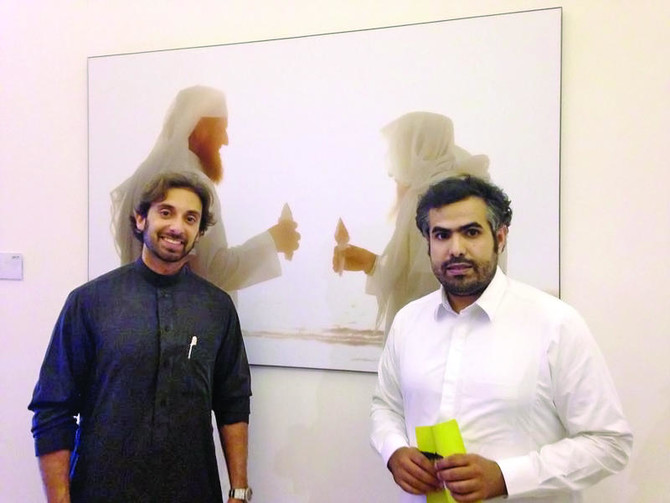
Speakers, headliners pull out of UK’s Great Escape festival over Gaza

DUBAI: Keynote speakers and headliners scheduled to take part in the UK’s annual Great Escape music festival in Brighton refused to appear at this year’s event due to the war in Gaza.
According to The Guardian, numerous acts withdrew due to a pro-Palestinian boycott targeting the event’s sponsorship by Barclays Bank. Campaigners allege that Barclays has increased its investments in arms companies that trade with Israel.
Bands Boycott Barclays (BBB), the organization spearheading the campaign, asserted that the bank was engaged in “laundering its reputation” through its association with the music festival, a claim that Barclays refutes.
A BBB spokesperson told the BBC that 163 acts, four showcases and two venues had pulled out of the festival.
The Great Escape is an annual music festival held in Brighton, showcasing emerging artists from around the world. It features hundreds of performances across various venues, along with industry panels and networking opportunities.
It is the event that has been key in launching the careers of artists such as Stormzy, AlunaGeorge, Fat White Family and Anna Calvi.
‘Material Woman’ exhibition in London creates synergy of Arab women’s fashion and art

- Curation tells a “story about how women use their hands to craft their destinies,” Shoucair says
LONDON: The worlds of fashion and art from Arab female creatives converged this week at the “Material Woman” exhibition in London.
The exhibition, held from May 17 to May 19 at Soho Revue, is the brainchild of the art collective Hayaty Diaries, in collaboration with the fashion platform and pop-up series 3eib.

Featuring an eclectic mix of sculptural art, mixed media, projection installations, fashion and jewelry, the exhibition explored craftsmanship and materiality.
“Each element came together to tell a cohesive and beautiful story about how women use their hands to craft their destinies and honor their heritages through both creative worlds of art and fashion,” Lebanese curator and Hayaty Diaries co-founder, Christina Shoucair, told Arab News.
The curatorial process began with the pairing of artists and designers, creating a harmony between the works.

Bahraini artist Zayn Qahtani’s shrine-like objects, featuring delicate ethereal drawings on date paper, explore themes of venerative mourning. These are paired alongside a series of rustic sculptures and draped garments by Egyptian designer Nadine Mos.
Lebanese artist Yasmina Hilal’s photo sculptures, which incorporate her distinctivve metalwork and soldering technique, are complemented by a curated display of contemporary silver and gold accessories by Celine Dagher, a Lebanese jewelry designer.
Meanwhile, Egyptian artist Hanya Elghamry examines the process of remembering by graphically recreating various details and narratives in her installation “Abandoned Projection.” Set as a backdrop against her floating “Tampered Redux” series, along with Moroccan designer Hanan Sharifa’s mesh and delicate dresses, the space offers visitors an immersive experience.
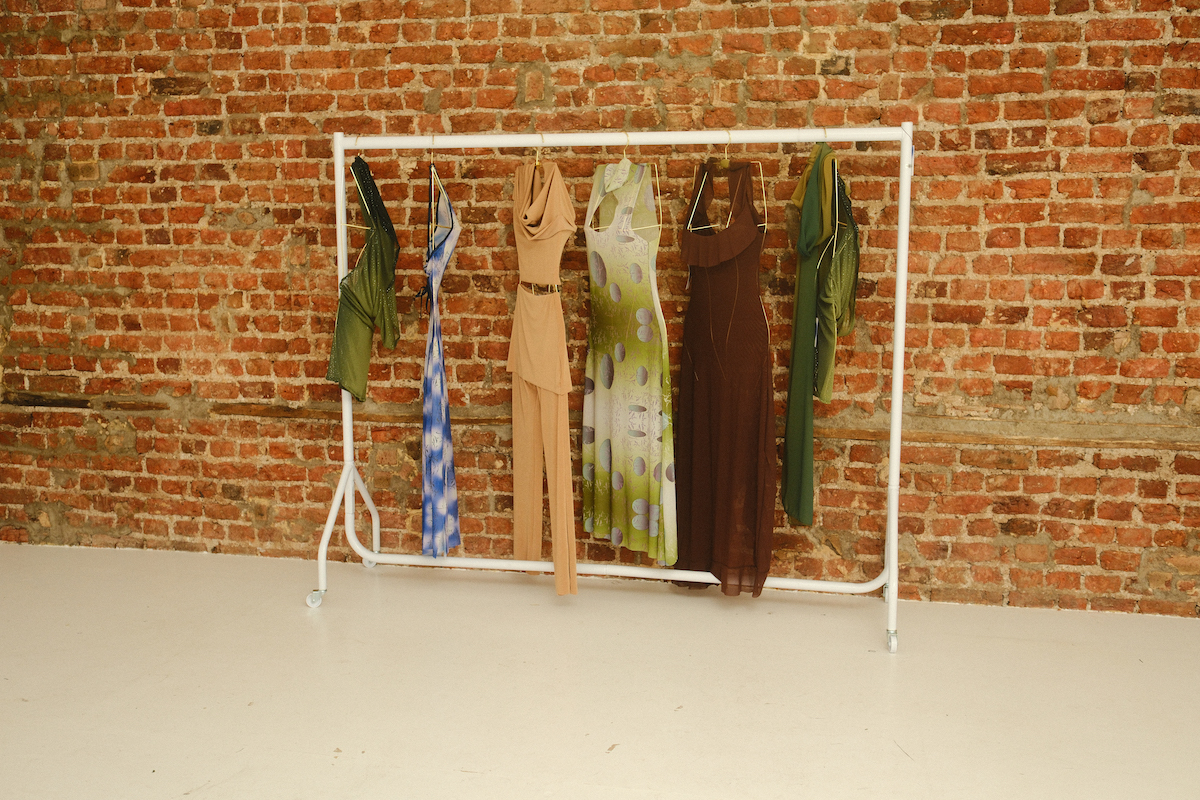
“Christina and Kinzy presented the vision for The Material Woman and I loved the idea of blending the worlds of fashion and art together and utilizing the theme of materiality as a vehicle of creative empowerment and liberation,” 3eib founder, Dania Arafeh, told Arab News.
Hayaty Diaries, which focuses on celebrating the artwork of Arab women, marked its debut last December with its inaugural exhibition, “Through Their Eyes: Perspectives Unveiled,” in the British capital.
“Our Hayaty Diaries journey has been incredible. We’ve had the privilege of meeting many creatives from the region and have felt the warmth and support of the community. We are immensely grateful for all the encouragement we have received along the way,” Egyptian-Saudi curator and Hayaty Diaries cofounder Kinzy Diab told Arab News.
The London-based collective is now preparing for its exhibition “Levitate,” which will run from June 6 to June 16 and center around themes of fantasy and imagination.
Hoor Al-Qasimi appointed artistic director of the Biennale of Sydney

DUBAI: The Biennale of Sydney announced this week that Emirati creative Hoor Al-Qasimi will become its artistic director for 2026.
The 25th edition of the biennale will run from March 7 to June 8.
Since its inception in 1973, the biennale has grown to become one of the longest-running exhibitions of its kind and was the first biennale established in the Asia-Pacific region.
Al-Qasimi created the Sharjah Art Foundation in 2009 and is currently its president and director. Throughout her career, she acquired extensive experience in curating international biennials, including the second Lahore Biennale in 2020 and the UAE Pavilion at the 56th Venice Biennale in 2015.
In 2003, she co-curated the sixth edition of Sharjah Biennial and has remained the director of the event since.
Al-Qasimi has been president of the International Biennial Association since 2017 and is also president of the Africa Institute. She has previously served as a board member for MoMA PS1 in New York and the UCCA Center for Contemporary Art in Beijing, among other roles.
She is also the artistic director of the sixth Aichi Triennale, scheduled to take place in Japan in 2025.
Saudi pop star Mishaal Tamer feels ‘honored and grateful’ ahead of sold-out London gig

- Singer tells Arab News his fans in the city have a special place in his heart but he owes his success to people all over the world who have embraced his music
- He says his debut album, “Home is Changing,” out in October, is a tribute to the changes and reforms that have swept through the Kingdom in recent years
LONDON: Saudi singer Mishaal Tamer said he feels honored to be performing his first headline show outside Saudi Arabia in London and is grateful to his fans there for their support.
Speaking to Arab News ahead of his sold-out gig on Friday at Camden Assembly, a live music venue and nightclub in Chalk Farm, Tamer said his fans in London will always have a special place in his heart.
“The people attending the show in London have been with me from before the starting line and I really appreciate that,” he said of the 220 people who will attend the event. “I will love those people forever and they will be in my heart forever.”
Tamer also thanked his fans in Saudi Arabia and elsewhere in the world, saying he owes his success as an independent artist to them.
“The kids that are back home and the ones abroad that have found me have been supporting me,” he said. “This would be impossible without them. I am grateful to the fans for listening to the music and sharing it.
He told how he was approached by two fans in a restaurant after arriving in the UK, which helped him realize how his profile was growing.
“One of them was Saudi, the other wasn’t,” Tamer said. “When I looked at that, it made me realize that not only was this bigger than I expected for me, as an artist, but that what we’re doing is bigger than me.”
His debut album, “Home is Changing,” is due for release in October and he said it is a tribute to the changes and reforms that swept through the Kingdom in recent years.
“There are so many opportunities that keep popping up, so many cool new things,” he added. “People have the freedom and creativity to make the world around them and the environment around them, to shape it into what they see in their heads.
“It feels almost like every other country is decaying whereas the Kingdom is growing and that feeling makes me proud.”
The evolution of Saudi Arabia “sets an example of always being hopeful for the future and having a positive attitude,” Tamer said. “And I think the optimism that we have right now in the Kingdom is a beautiful thing.”
Saudi filmmaker Abdulrahman Sandokji’s ‘Underground’ discusses the Kingdom’s music scene

- ‘Unfolding the unseen is my thing,’ says Abdulrahman Sandokji
DUBAI: “In film school, they tell you that your first film should be a documentary — train in a simpler form, then go to fiction,” says Saudi filmmaker Abdulrahman Sandokji. “So, naturally, I started with documentaries. But I got hooked.”
Over 15 years later, Sandokji still hasn’t moved on to fiction. Not that that’s an issue for him. His documentaries — produced by the company he founded, Basar Media — have proven immensely satisfying.
“A fiction film can take one or two years to shoot. I have no patience with waiting days and days to shoot one scene. I want things faster and more surprising,” he tells Arab News.

“And (documentaries) are honest. You’re talking about real stories. Unfolding the unseen is my thing, you know? I want to go into these deep places and show them to people,” he continues. “It’s a way to understand people, to really see people. To pick a flower from lots of beautiful gardens and plant them in your own garden. It’s more of a journey of discovery for me, you know? That’s what I love about documentaries.”
Sandokji’s breakthrough came with his 2014 film “Phosphine,” which he describes as a “Michael-Moore style” investigative documentary. It explored how the titular chemical — a potentially deadly respiratory poison — had been used (out of ignorance rather than malice) in homes to kill cockroaches, rats and other pests. While the actual occupants had been told to leave their apartments for five or six days, their neighbors were not, and the odorless gas killed them.
Sandokji put his documentary up on YouTube. It got 5 million views in five days, he says, adding that, at the time, he and his colleagues were delighted if they got 100,000 views on any of their videos, because they “weren’t funny — they weren’t comedies.” But “Phosphine” ended up making a difference to society, as well as to Sandokji’s career.
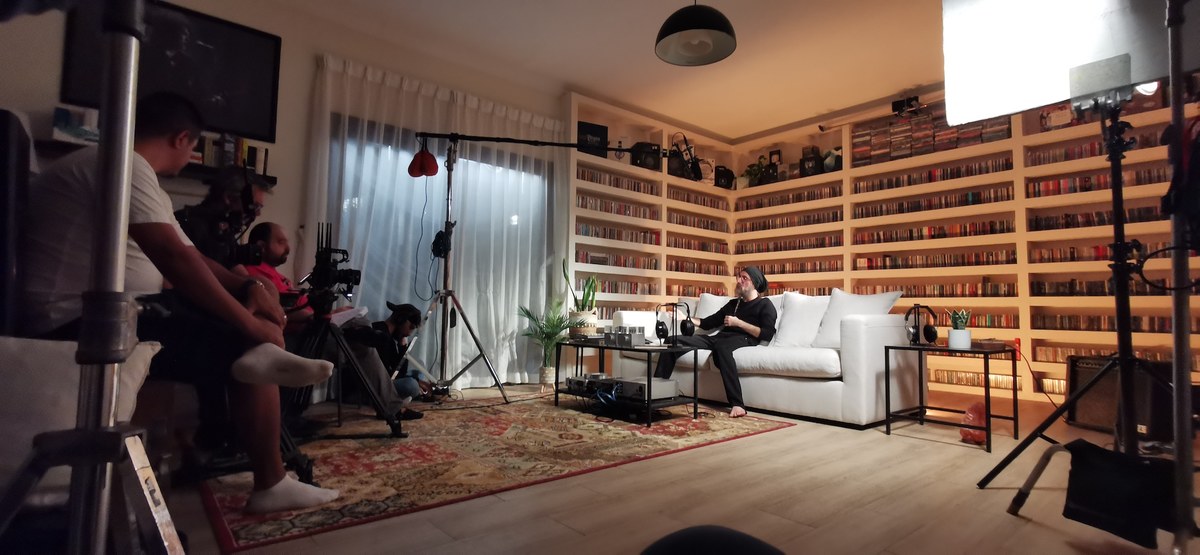
“We were on TV shows and talk shows — we were overwhelmed. Lots of social movement happened and governmental sectors held very urgent meetings about this substance. The Ministry of Health set up a hotline about it,” he says. “That was when I thought, ‘OK. Maybe this is your thing. Being a voice for those who want their voices to be heard.’”
Unlike “Phosphine,” Sandokji’s latest doc, “Underground,” is not a “tragic story.” But, once again, it was a “journey of discovery” for him — one that delves into the Kingdom’s burgeoning alternative music scene.
The idea — as for many of his films — was not Sandokji’s own. “When I analyze myself, I’m more of a person who receives an idea and then gets to enlarge it,” he says. “When I generate an idea myself, people go, ‘Mmm. No.’” He laughs. “They’ll go, ‘How about this idea instead?’ I’m like the gas — just throw the spark on me and I’ll explode, you know?”
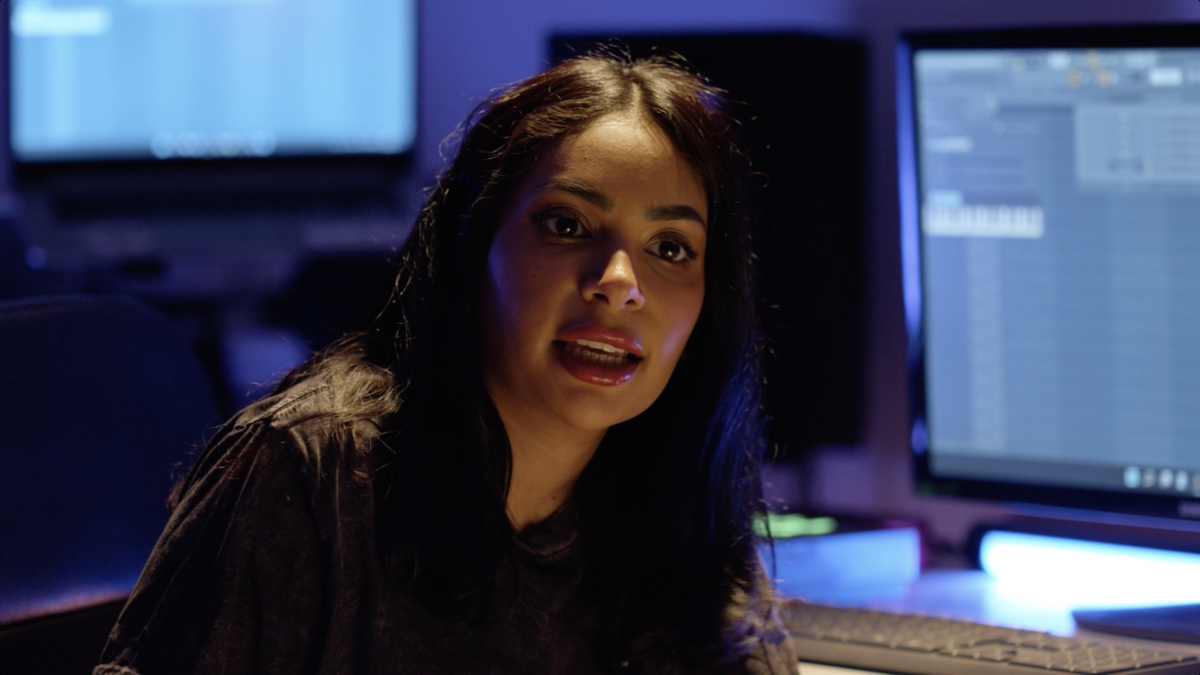
The “spark” for “Underground” came from a friend, Tamer Farhan. “He’s passionate about underground music. He knows all these artists,” Sandokji says. “And he opened the window to me and said ‘Come and have a look.’”
What Sandokji found was a wealth of talent and experience that has largely gone unnoticed in Saudi Arabia — understandably, given that until recently live music was largely outlawed in the Kingdom, and music that wasn’t commercial Khaleeji pop or classical Arabic fare was frowned upon.
“These people are good people,” says Sandokji. “Over the years people talked about the music underground as this place with drugs and all this prohibited stuff. But no. They are nice. They have feelings. They love their music and they’re passionate and they’re kind.”
That passion shines through in “Underground,” whether from veterans such as metal band Wasted Land’s frontman Emad Mujallid or relative newcomers such as DJ Cosmicat (Nouf Sufyani) and Salma Murad. All the artists involved are given the opportunity to discuss their craft and love for music in depth, and to play some of their music live.
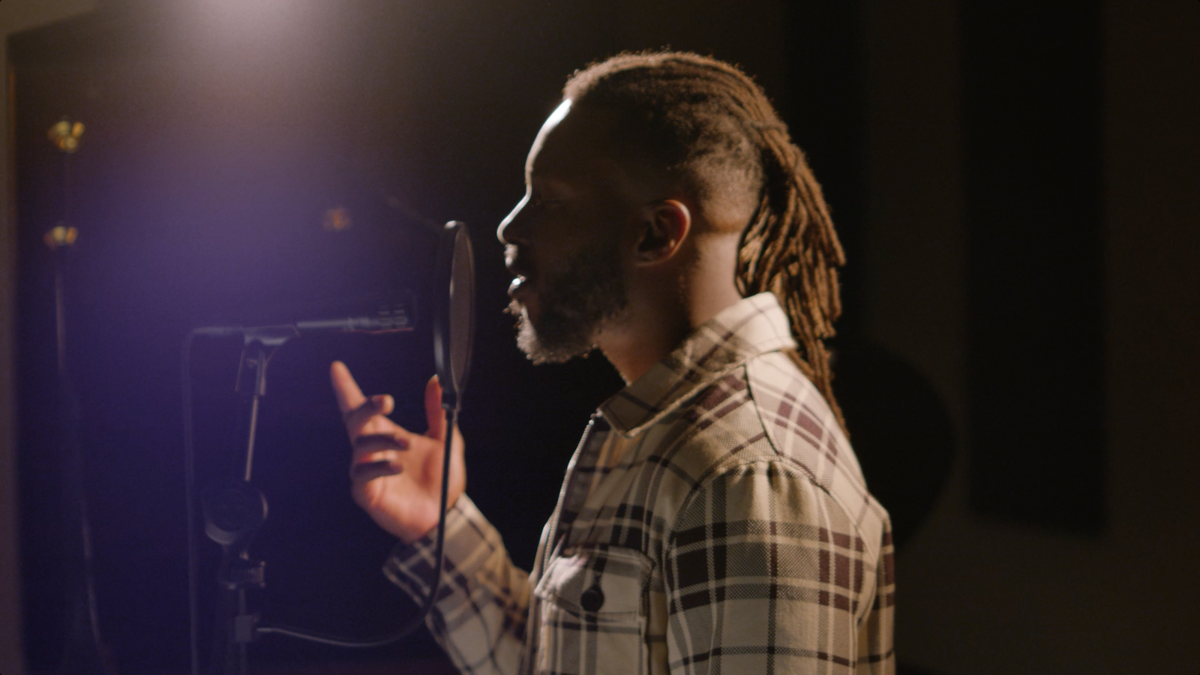
“(The songs) are not recorded and synced,” Sandokji says. “I wanted to show the audience how talented they are.”
So far, that audience is whoever attended the premiere on the opening night of the Saudi Film Festival on May 2 — another landmark for Sandokji, he explains. “Usually they choose fiction films — good fiction films — for the opening. I was always watching them thinking ‘When am I going to make a movie that could be screened in the opening? I’m a documentary maker, nobody would give me that chance.’ But it happened.”
And he believes “Underground” has the potential to grab international attention. It’s already been submitted for consideration at several large festivals, but the main aim since he started shooting it in 2022, Sandokji happily admits, has been to get the film on Netflix. There are also discussions underway about turning it into a TV series.
“It’s something people will want to know more about, I think,” he says, before citing the words the movie concludes with, when Murad is discussing what music means to her: “It’s powerful. It’s beautiful.”
“When Salma said that, I had goosebumps,” Sandokji says. “I thought, ‘Yes! These are the words the movie has to end with.’ Music is powerful; it can make you very strong, it can make you very weak… it’s magical.”










